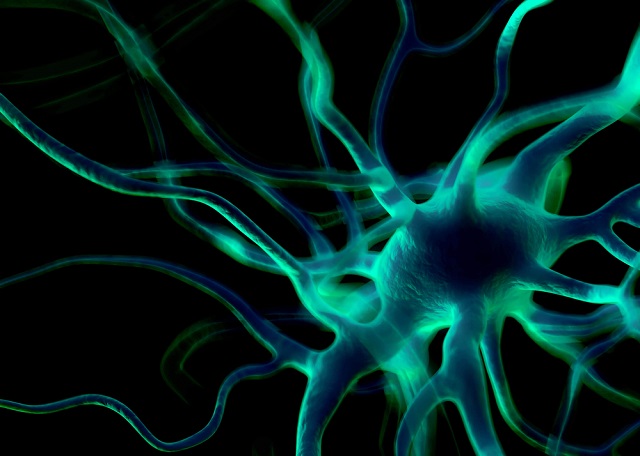Nov 19 2015
New research has shown quantum dots can be used to map neural networks in the brain by allowing neural signals to be visualised in real time. This breakthrough will allow further insight into neural communication in both normal and abnormal brains.

royaltystockphoto.com | ShutterstocK
The fundamental mechanisms behind neural communication depends on the time-resolved modulation of the electric field strength, which is sustained throughout the cellular plasma membrane. This phenomenon is referred to as the action potential.
There is tremendous interest in mapping all the neuron connections in the human brain. To do that we need new tools or materials that allow us to see how large groups of neurons communicate with one another while, at the same time, being able to focus in on a single neuron's activity. Our most recent work potentially opens the integration of voltage-sensitive nanomaterials into live cells and tissues in a variety of configurations to achieve real-time imaging capabilities not currently possible.
Dr. James Delehanty - NRL Center for Biomolecular Science and Engineering
Quantum dots (QDs) are photo-stable nanomaterials that have fluorescence lifetimes in the nanosecond range. These bright, small and crystalline semiconductors have several beneficial photophysical features. As a result they are now being considered for the potential imaging of neuronal action.
When QDs are interfaced with experimental brain systems, they tend to have a low cytotoxicity. Also they can be easily localized either on or within a cells’ plasma membranes.
Two-photon imaging is a popular imaging modality that is often used for imaging various body tissues, including the brain. QDs have two-photon action cross-sections which are several orders of magnitude larger than the fluorescent proteins or organic dyes currently used for biological imaging.
QDs are very bright and photostable so you can look at them for long times and they allow for tissue imaging configurations that are not compatible with current materials, for example, organic dyes. Equally important, we've shown here that QD brightness tracks, with very high fidelity, the time-resolved electric field strength changes that occur when a neuron undergoes an action potential. Their nanoscale size makes them ideal nanoscale voltage sensing materials for interfacing with neurons and other electrically active cells for voltage sensing.
Dr. James Delehanty - NRL Center for Biomolecular Science and Engineering
The researchers performed a new study in which they demonstrated that the QD photoluminescence (PL) is effectively suppressed by an electric field that is commonly seen in the brain’s neuronal membranes. The study revealed for the first time that QD photoluminence is capable of monitoring a firing neuron’s action potential profile with millisecond time resolution.
This outcome has been linked to the ionisation of QD ionization by the action potential's electric field which is then followed by quenching of the QD PL. These latest findings contradict the traditional concept that QD PL suppression is related to the quantum-limited Stark effect. The Stark effect occurs due to the splitting and movement of spectral lines of molecules and atoms caused by the presence of an electric field.
The inherent superior photostability properties of QDs coupled with their voltage sensitivity could prove advantageous to long-term imaging capabilities that are not currently attainable using traditional organic voltage sensitive dyes. We anticipate that continued research will facilitate the rational design and synthesis of voltage-sensitive QD probes that can be integrated in a variety of imaging configurations for the robust functional imaging and sensing of electrically active cells.
Dr. James Delehanty - NRL Center for Biomolecular Science and Engineering
The research was conducted by scientists at the U.S. Naval Research Laboratory (NRL)